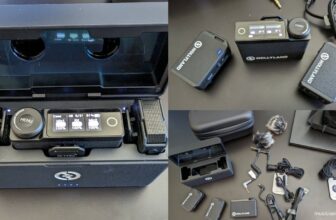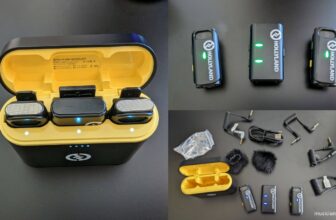AKG P220 Condenser Microphone Review

I recently had the pleasure of testing the AKG P220 large-diaphragm condenser microphone in my home studio. It immediately impressed me with its clarity, versatility, and robust build.
Note: AKG sent me a free sample of this to test it out and review it. This does not affect the opinions mentioned in this review.
Contents
AKG P220 Condenser Microphone Review
Verdict
The AKG P220 is a very impressive mic for this price point. It provides great sound quality and build quality, making it an great choice for both amateurs and professionals looking for great audio quality on a budget.
Pros
- Fantastic sound clarity
- Versatile for different recording settings
- Sturdy metallic construction
- Includes useful accessories like shock mount and carrying case
- Excellent price-performance ratio
Cons
- Lacks multiple polar patterns
Sound Quality
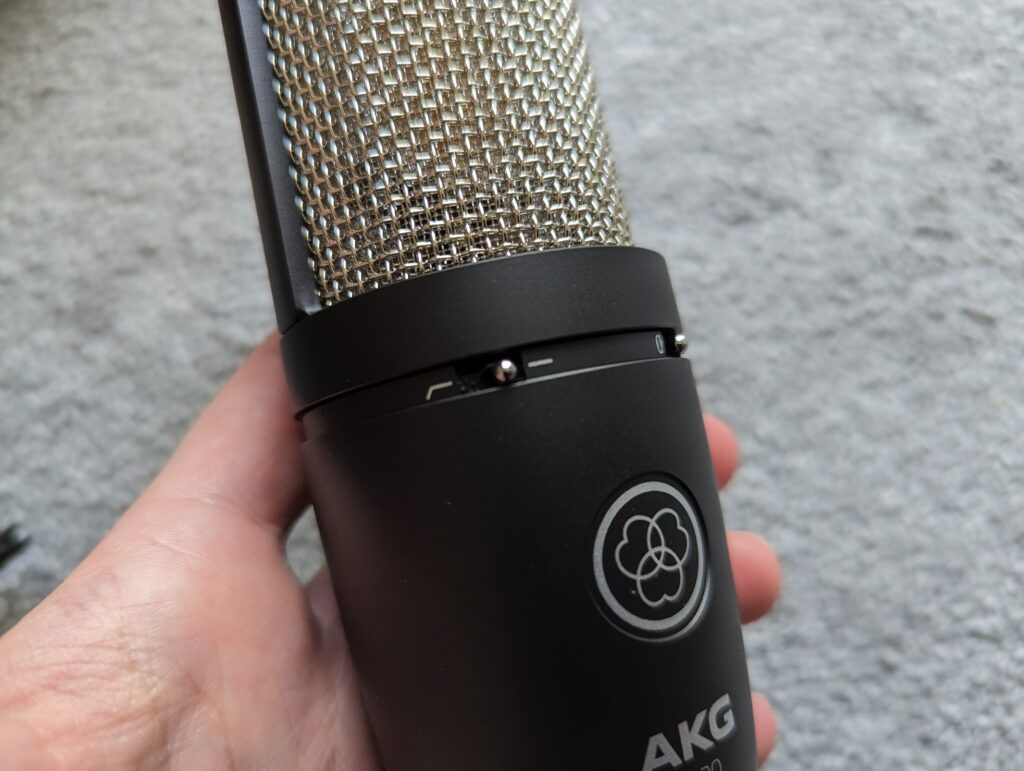
I’ve been very impressed with the sound quality of the AKG P220. It has an open and warm sound and I didn’t feel any noticeable noise or distortion from this at all.
It has a very clear high-end without being harsh, as well as having a very decent bass response. It very accurately reproduces the sound source for its price point without adding too much of its own color to it.
It’s very versatile for different recording situations, though keep in mind that it only has a cardioid polar pattern. It can handle all types of vocals, as well as string instruments, and piano, and it can also be used as a drum overhead mic.
The bass response is fantastic on this mic, which makes it particularly great for recording anything that produces a lot of low-end, such as deeper voices and piano.
You may be eyeing up more expensive condenser mics, but the AKG P220 might just be good enough for your needs. There comes a point where the relationship between price and microphone sound quality yields diminishing returns. The P220 is in a great sweet spot where it provides excellent value for money while offering impressive audio clarity.
The AKG P220 comes equipped with a couple of features that you can use if needed:
Pad Switch: This microphone includes a -20 dB attenuation pad which you can engage to prevent distortion when recording very loud sources, like brass instruments or amplified guitars.
Low-Cut Filter: There’s also a low-cut filter, useful for eliminating low-frequency noise or rumble from recordings. This feature is especially handy when recording in less controlled environments or when capturing vocals and speech where low-end clarity is crucial.
For any audio beginners reading this, keep in mind that you’ll need acoustic treatment in your room to get a great sound out of this, since this is a sensitive condenser mic that will pick up reflections and echoes from the room. Read our article on dynamic vs condenser mics for more information.
Frequency response

The mic has a wide frequency response between 20Hz – 20kHz. The mic has a fairly flat frequency response with slight increase in the high-end and in low-end/sub. The green line indicates the frequency response when you engage the low-cut filter on the mic.
What’s in the Box?
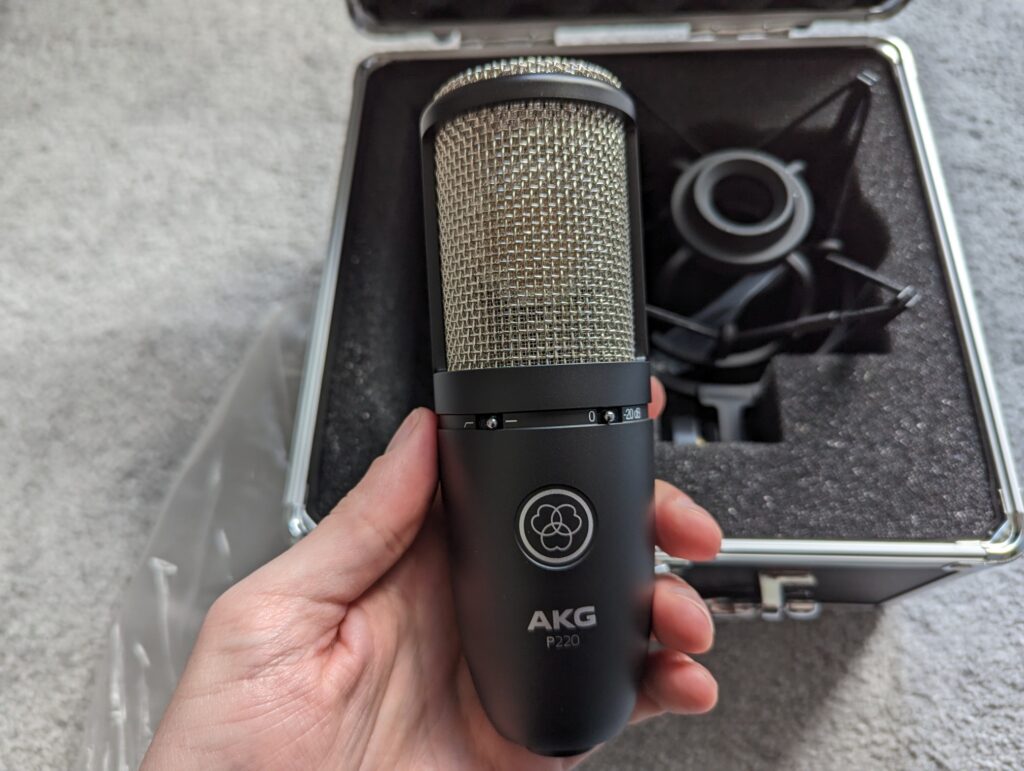
The box includes the microphone itself, a shock mount to reduce mechanical noise, and a good-quality carrying case for secure transportation and storage.
All of these items have the feel of great build quality, and you’ll probably be surprised at how good these are for the price.
Build Quality
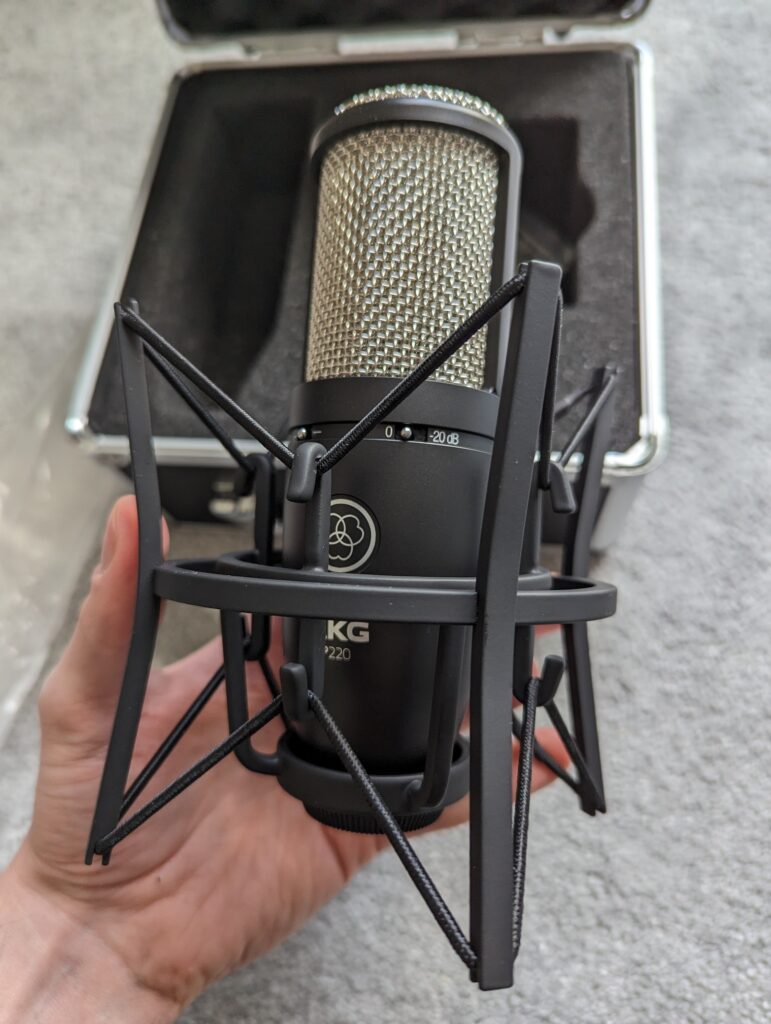
The metallic build of the P220 gives it a feel of durability that you can rely on for daily use. I haven’t had it for long enough to comment on its long-term durability, but reports from others online are very positive in this regard. If you care for the mic and don’t go throwing it around, I’d be pretty confident of the build quality of this!
Alternative to the AKG P220
The AKG P220 is commonly compared to the Audio Technica AT2035. These offer very similar features with minor differences in specs. In terms of accessories, the AKG P220 comes with a very solid carry case whereas the AT2035 comes with a lightweight pouch.
The P220 has a -20dB pad while the AT2035 has a -10dB. If you’re miking very loud sound sources then the -20dB pad on the P220 would fare better.
The P220 has a high pass filter at 300Hz, whereas the the AT2035 rolls off at 80Hz. Again, it’s a matter of preference over how much bass roll-off you want.
Minor differences in specs aside, it’s totally a matter of preference over which one you like the character of more. These are both quite similar mics and are both very well built. According to frequency charts, the AT2035 has a slightly more neutral frequency response and the AKG P220 has a slightly higher increase in the high-end.
While the following two sections might be very obvious to audio pros, they will be no doubt useful for any beginners reading this:
Connecting the AKG P220: XLR
The AKG P220 is an XLR microphone, which means it doesn’t plug directly into a standard computer USB port. Instead, it requires an audio interface or mixer that provides phantom power and can handle XLR inputs. This setup is standard for higher-quality recording environments but does mean additional equipment is necessary.
For those seeking a more straightforward setup, a USB microphone like the AKG Lyra, which we reviewed separately, might be preferable. USB mics connect directly to a computer and simplify the recording process. However, it’s important to note that while USB microphones offer convenience, they generally don’t match the superior sound quality provided by XLR microphones like the AKG P220.
Comparison with Shure SM7B
The Shure SM7B is a dynamic microphone, contrasting sharply with the AKG P220’s condenser design. Dynamic mics like the SM7B are typically more rugged and better suited for handling extremely high volume levels without distortion, making them ideal for loud vocals and instruments.
In contrast, the P220, as a condenser mic, excels in capturing more nuanced sounds and finer details, making it better suited for studio recordings where clarity and sound fidelity are crucial, though your room will need to be more treated to get a good sound out of it because the condensers pick up background noise.
With that in mind, it’s not an apples-to-apples comparison and it depends on what acoustic treatment you have in your room and what you’re looking to get out of your recordings.
Final Verdict
My experience with the AKG P220 condenser microphone has been overwhelmingly positive. It delivers a level of audio quality and versatility without breaking the bank. For anyone looking to upgrade their recording setup without spending a fortune, the AKG P220 represents a great balance of quality and value.
Image credit: AKG frequency response, pollar pattern courtesy of AKG.



